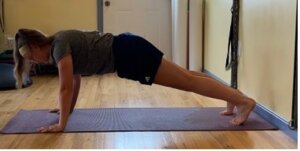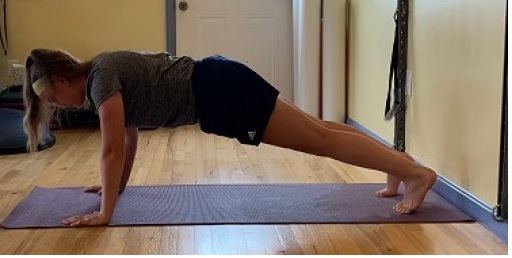Core Training

Do you have questions about core training? Have you been told you need a stronger core?
In this post we are going to take a look at what you need to know about your core. And the best and safest ways to train it.
I started talking about the core a little bit in the post Holding a Plank. I reviewed a case study about a client struggling to hold her plank. Spoiler alert it had nothing to do with her core training or her core strength.
Not only will I talk about training for strength. I am going to share the benefits that proper core training can have on your back, neck, hips, and more!!!
What is Your Core?
Your core is made up of bones, muscles, tendons, ligaments, joints, blood vessels, nerves, fascia, and vital organs.
When we think of core training generally people think of the six or eight-pack abs. But there are a whole lot more muscles in your core.
Besides those six and eight-pack abs. You have core muscles under those that do the work of supporting each segment of your spine, hip and joints.
In traditional exercise, these smaller yet very important muscles are often overlooked.
However, not if you train with me!
Let's break it down:
Superficial core muscles of our abdomen.
• They are big muscles.
• They move you.
• Help you bend and twist.
• And can be used to stabilize your spine when lifting or moving heavy objects.
• When you get injured they tend to get tight to protect us.
Deeper core muscles:
• They tend to be smaller/thinner muscles.
• They stabilize your spine and hip joint when you move.
• They attach to your spine.
• They attach deep inside your hip joint.
• They tend to fatigue quickly when you are injured.
• They are closely related to breathing.
The best core training strategies will address both superficial and deep core muscles.
For spine and joint health, you must have a balance between all of these muscles.
Meaning they each must be doing their job adequately. When they don't you may experience back, neck pain or tightness, hip pain or tightness, muscle fatigue, and more.
In this post I am going to specifically talk about training the deep core muscles.
These muscles cannot be felt or seen as they lie underneath the big muscles.
So, how do you know if they are working or not?
The psoas muscles. (The ‘p’ is silent.) is one of several deep core muscles that help stabilize your spine and your hip joint.
When this muscle and other deep muscles are not working well you may experience a feeling of tightness or discomfort (pain) in your low back or hip to name a few.
Our number one exercise to help these small muscles perform at their best is three-dimensional breathing.
The diaphragm is one of the primary muscles you use when you breathe. It has an intimate relationship with the psoas muscle. As well as other deep core muscles. The diaphragm and the muscles that help support your lumbar spine (low back) actually blend together.
Time and time again when I help my clients improve their ability to breathe three-dimensionally they soon report less tightness, pain, and improved ability to move.
Not sure how to breathe three-dimensionally? Check out this video or reach out I am here to help!
Stay Motivated,

